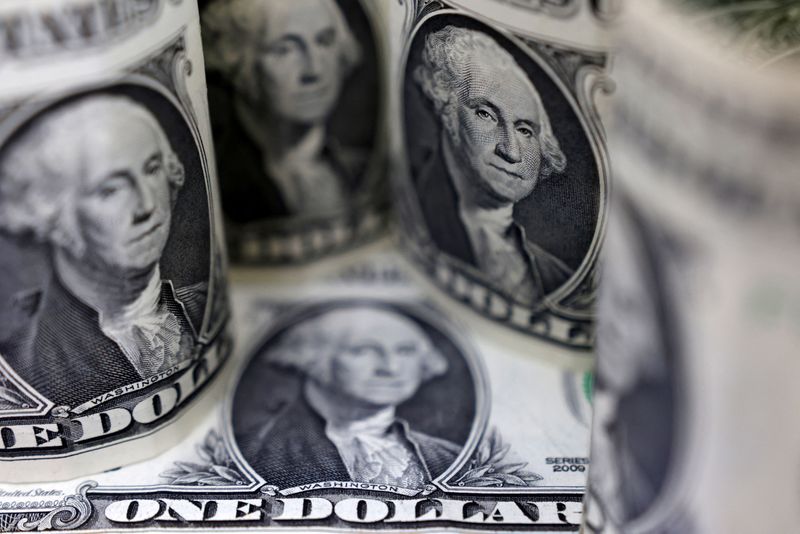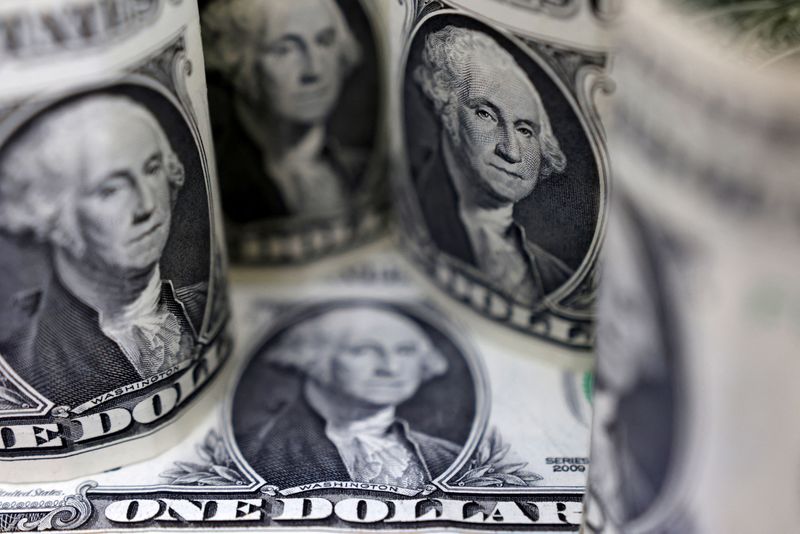Forex
Dollar hovers near highs as investors parse China’s stimulus plans; euro slips

By Medha Singh, Vidya Ranganathan
SINGAPORE/LONDON (Reuters) -The dollar hovered near recent highs on Monday as investors digested China’s weekend stimulus announcements that some found disappointing, while the euro extended its fall ahead of a central bank meeting this week.
The euro was down 0.1% at $1.092, falling for the 11th time in 12 sessions as investors moved to price in a 25 basis-point interest rate cut from the European Central Bank with near certainty at its Thursday meeting as data pointed to deteriorating euro zone activity.
Current indicators indicate continued weakness in the German economy in the past quarter, the economy ministry said in its monthly report on Monday.
Meanwhile, credit ratings agency Fitch revised France’s outlook to “negative” from “stable” on Friday, citing increases in fiscal policy and political risks.
“Germany is still mired in stagflation and France is under its own issues with budget and growth problems and that doesn’t bode well for the euro,” said Jane Foley, head of FX strategy at Rabobank.
“It speaks to the speculation that the ECB is getting more concerned about growth than they were.”
The pound dipped 0.2%, hovering near one-month lows at $1.30460.
The yen weakened to its lowest since early August against the dollar at 149.640 in thin trading as Japanese markets were shut for a bank holiday.
U.S. Treasuries were also unlikely to provide much of a lead since bond markets were closed for Columbus Day.
The ticked 0.1% higher to 103.13, a touch below last week’s peak, which was its highest since mid-August, on the back of traders reducing bets on further jumbo rate cuts by the Federal Reserve at its remaining policy meetings this year.
The dollar has also found support in the fact that other central banks could be cutting interest rates more than the U.S., Foley said.
Last week’s U.S. data showing slightly hotter-than-expected consumer inflation but higher weekly jobless claims have left intact forecasts for the Fed to cut rates by 25 basis points in November and December.
Traders next have on their radar Thursday’s retail sales and jobless claims data in the U.S., in addition to the ECB’s policy review.
Fed Governor Christopher Waller – a supporter of a larger rate cut because he is worried the pace of price increases is undershooting the Fed’s target – speaks later on Monday.
CHINA STIMULUS DISAPPOINTS
Trading in Asia was dominated by Beijing’s fiscal stimulus briefing. China’s yuan fell 0.4% against the dollar.
Without providing details on the size of the fiscal stimulus being prepared, Finance Minister Lan Foan told a press conference there will be more “counter-cyclical measures” this year.
“More time may be needed for more thought-out and targeted measures,” said Christopher Wong, currency strategist at OCBC in Singapore. “But those measures also need to come fast as markets are eagerly waiting for them. Over-expectations vs under-delivery would result in disappointment.”

The has fallen nearly 1% against the dollar since Sept. 24, when the People’s Bank of China kicked off China’s most aggressive stimulus measures since the pandemic.
In digital currencies, bitcoin firmed 3.5% to a two-week high of $64,952, while ether was last up 3.2% after hitting a two-week high of $2,546.35.

 Forex3 years ago
Forex3 years agoForex Today: the dollar is gaining strength amid gloomy sentiment at the start of the Fed’s week

 Forex3 years ago
Forex3 years agoUnbiased review of Pocket Option broker

 Forex3 years ago
Forex3 years agoDollar to pound sterling exchange rate today: Pound plummeted to its lowest since 1985

 Forex3 years ago
Forex3 years agoHow is the Australian dollar doing today?

 Cryptocurrency3 years ago
Cryptocurrency3 years agoWhat happened in the crypto market – current events today

 World3 years ago
World3 years agoWhy are modern video games an art form?

 Commodities3 years ago
Commodities3 years agoCopper continues to fall in price on expectations of lower demand in China

 Economy3 years ago
Economy3 years agoCrude oil tankers double in price due to EU anti-Russian sanctions































